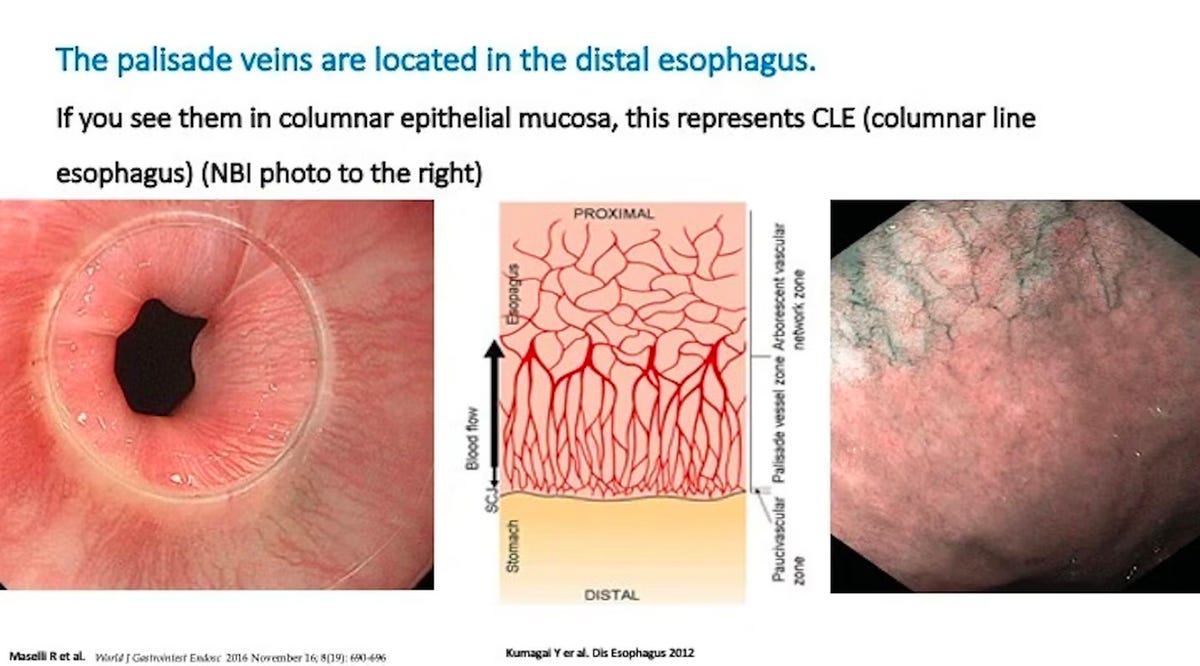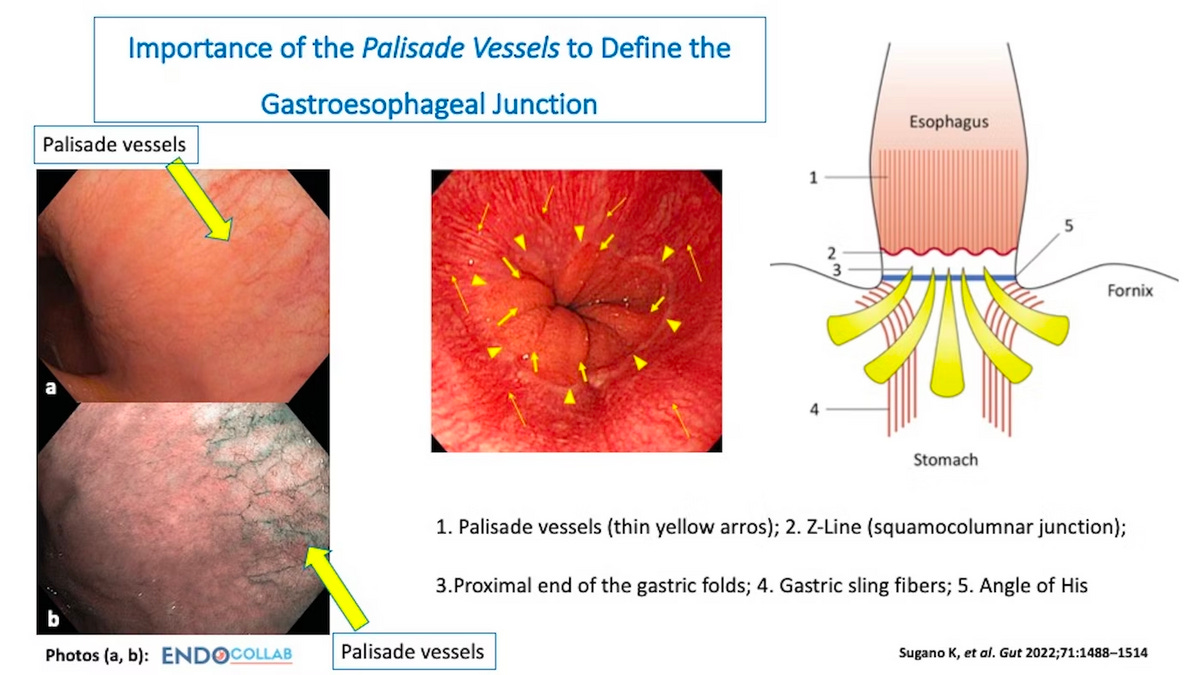What are the Palisade Veins?
The palisade vessels are tiny capillaries (or veins) located in the distal submucosa of the esophagus and are quite important to distinguish esophagus from stomach. Whereas in most countries endoscopists use the beginning of the proximal gastric folds to determine the location of the gastopesophageal junction, in Japan and other astern countries, but also many Western experts, use the palisade vessels as a marker of the GEJ. I first learned about the palisade veins about 10 years after finishing my gastroenterology training. The gastroesophageal junction is such an interesting transition zone, which continues to surpise us. Although the palisade veins are mostly known to be helpful for defining the GEJ, there are additional pathophysiological aspects that make this vessels quite important. Let’s ask Prof. Roy Soetikno explain us another pearl about the palisade vessels
Prof. Soetikno:
Let me try to answer. The palisade vessels are the linear vessels at the (esophago-gastric) EG junction. These vessels are in the mucosa and most importantly they give rise to esophageal varices.
These vessels are in the mucosa to provide continuous circulation of that area. This is because the diaphragm would intermittently pinch the m. propria during expiration and detour pathways are needed to ensure circulation.
Normally, the lower part of the palisade vessels drain caudad and the rest cephalad. But with portal hypertension the flow becomes caudad throughout. The diameter of the vessels will increase as the pressure goes up. With time, a bunch of dilated vessels become clustered and give rise to a column of varix.
At higher Portal V - HV pressure gradient, bleeding occurs as one of the vessels burst.
The point of bursting is usually within 3 cm of the SCJ where there is a weak point in the dilated palisade vessels.
Thus banding should be done in that area only. The column of varices in the mid and sometimes proximal esophagus are in the submuosa layers as they are not from the palisade vessels. They usually don’t bleed. Banding them actually may cause iatrogenic bleeding as it may be difficult to cause a complete occlusion.





